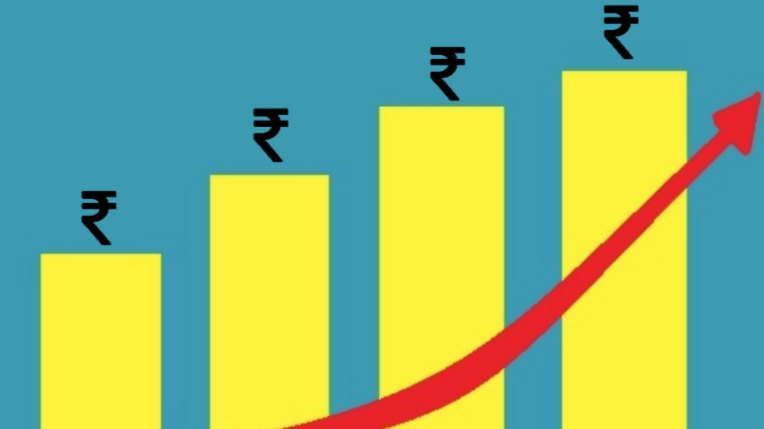Today’s policy rate action was per expectations. Going by statements in the press conference, future rate action will depend on how the inflation pans out. It is likely there would be another rate hike of 25-35 basis points on December 7, 2022.
The Monetary Policy Committee (MPC), the rate-setting body of the Reserve Bank of India (RBI), has announced a 50 basis point (bps) hike in the repo rate. Before discussing the announcement, a quick look at the backdrop.
Backdrop
Prior to any rate review meeting, the financial markets are agog with expectations as to what is likely to happen. Financial markets work in anticipation of events and prices respond accordingly.
Surprisingly, prior to today’s meeting, global factors took precedence over domestic aspects. This was due to egregious events across the world, which had a bearing on RBI’s policy rate formulation.
Central banks all over the world are hiking rates. The bellwether, the US Federal Reserve (the Fed), is hiking aggressively, having already hiked their interest rate by as much as 3 percent this cycle, and threatening to hike more.
The US Dollar (USD) is at a multi-decade high and all global currencies, including the Rupee (INR), have weakened against it. Inflation is also at a multi-decade high globally, due to the tremendous amount of money pumped in earlier by central banks (quantitative easing), and now due to high crude oil and other prices.
All this leads to the expectation of a rate hike by the RBI. In India, after touching a high of 7.79 per cent in April 2022, inflation eased to 7 per cent in August 2022, and is lower than most countries.
Prior to today’s policy review, the repo rate, through which the RBI influences interest rates across the system, was 5.4 per cent, jacked up from a pandemic-period low of 4 per cent. Financial markets had already factored in a rate hike of 50 basis points (0.5 per cent), going into today’s review.
What happened?
The repo rate was hiked from 5.4 to 5.9 per cent. It means that the RBI is signalling interest rates in the system to move up by as much. The stance on future policy rates remains “withdrawal of accommodation.”
Accommodation being the low pandemic period rate of 4 per cent, and liquidity infusion measures.
The other variables that financial market participants look at are inflation and GDP growth. RBI’s projection on consumer price index (CPI) inflation remains the same as the previous policy review — which is 6.7 percent in the financial year 2022-23, expected to ease to 5 per cent in the first quarter of 2023-24. The GDP growth projection was revised marginally downwards, from 7.2 per cent earlier to 7 per cent.
The analysis
Today’s policy rate action was per expectations. Going by the statements in the press conference, future rate action will depend on the way the inflation pans out.
The MPC clarified that it was guided not so much by global developments as by domestic factors. The RBI has other tools in its kit to deal with global events like US rate hikes or the strengthening of the USD. The MPC’s mandate is to contain inflation and support growth.
The next MPC review meeting is scheduled on 7 December 2022. It is likely that there would be another rate hike of 25 or 35 basis points. CPI inflation is expected to ease to 5.8 per cent in the quarter Jan-March 2023, and further to 5 per cent in April-June 2023.
However, currently at 7 per cent, it has been stubbornly higher than the mandated tolerance level of 6 per cent. The current repo rate of 5.9 per cent is close to the neutral policy rate (that neither stimulates nor restrains growth).
There is no hard and fast definition of the neutral policy rate. it may be guided by current inflation (7 per cent) or projected inflation (5 per cent). But interest on deposits at leading banks are trailing CPI inflation, hence the real rate is negative.
The impact
The bond market had mostly priced in the interest rate action in today’s MPC meeting. Usually, when the RBI hikes rates, yield levels (interest rates) for bonds in the secondary market move up. However, when market events are already priced in, the incremental impact is not much. That is what happened today.
By way of reference, the 10-year Government Security (G-Sec) yield was approximately 7.1 percent prior to the current rate hike cycle which commenced in May 2022. Today, it is just under 7.4 per cent. While the RBI has hiked the repo rate by 190 basis points, the 10-year level has moved by hardly 30 basis points since May 2022.
However, the movement at the shorter end of the yield curve, say one-year maturity, has been higher. The shorter end depends much more on the repo rate.
The 190 bps hike is already priced in the NAV of debt funds. Future rate hikes are also more or less priced in. Hence, future rate hikes would not hit debt fund returns much.
Over the past two years, while debt funds returns have been muted, the YTM (yield-to-maturity) has moved up. YTM is the annualised return on the instrument if held till maturity. Higher YTM means higher accruals, which would lead to better returns over a period of time.
The interest on floating rate loans will move up, as these are benchmarked to an external rate (the External Benchmark-based Lending Rate – EBLR). The 3- and 6-month Treasury Bill yields have also moved up significantly.
The rate hike stands to benefit depositors. Albeit with a time lag, bank deposit rates would surely move up.
Source: https://www.moneycontrol.com/news/business/personal-finance/as-rbi-hikes-rates-expect-higher-interest-on-loans-and-deposits-9258591.html


